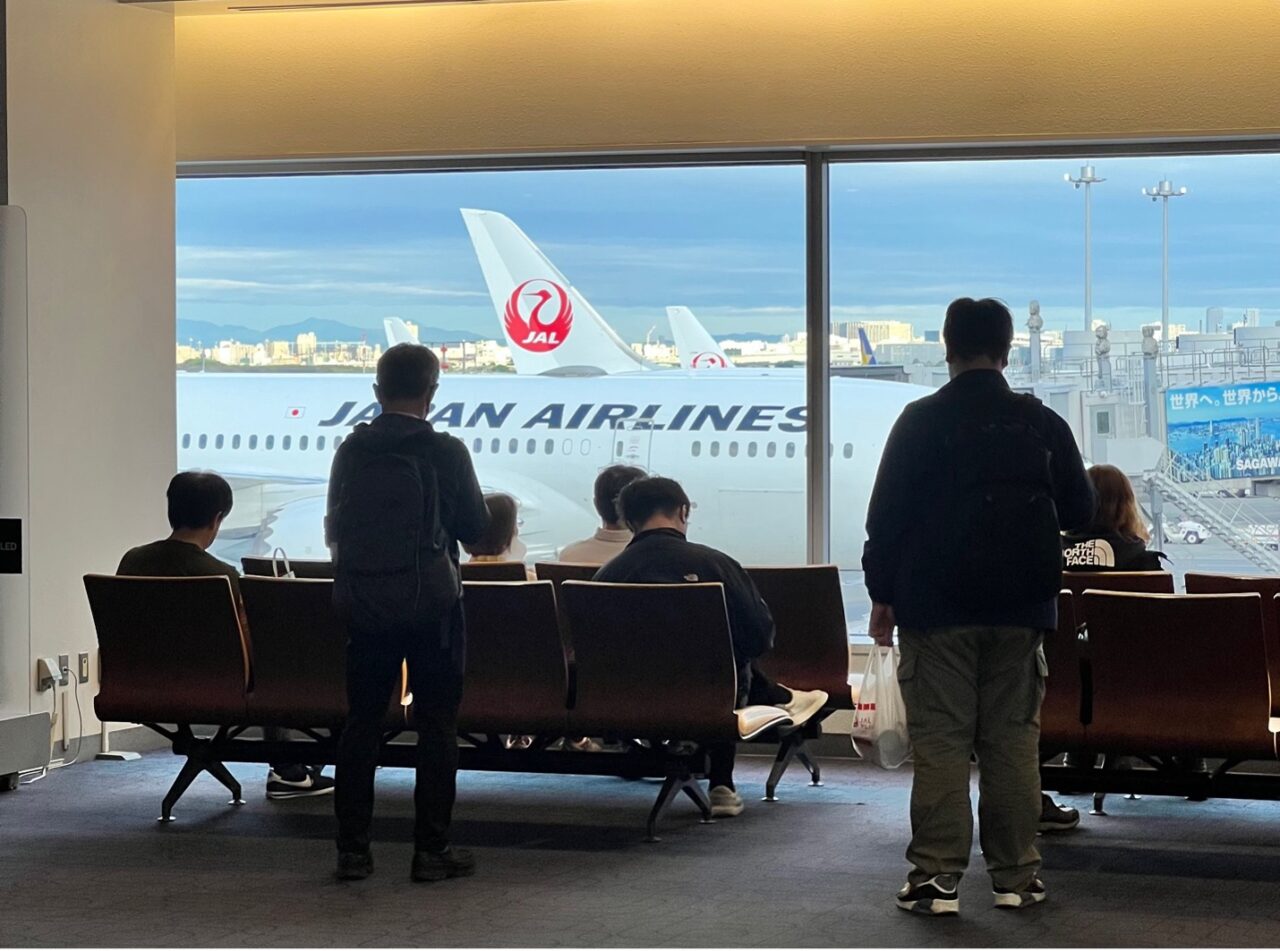Traveling in Japan Made Easy: Tips for Trains, Buses, and Saving Money


Written by
Name: Andra
Country of origin: Romania
How long you’ve lived in Japan: Fully in Japan since Feb 2023 (resident since Sept 2022)
Where you live in Japan: Tokyo
Instagram
I like to call Japan “The land of the 3S: Sushi, Sumo, and Shinkansen”. Whether you’re a tourist visiting for the first time or a foreign resident looking to enjoy your weekends, getting around Japan is much easier than trying to read kanji (don’t worry, we’ve all been there—or are still there). In this article, I’ll help you not only figure out how to go from one place to another but also how to save some money while doing it. Let’s get started!
Trains in Tokyo: Suica and Pasmo Alternatives
Tokyo’s train system is like a giant puzzle with trains, subways, and monorails running everywhere. The good news? You don’t need to be an expert to use it. All you need is an IC card like Suica or Pasmo—or an alternative if you don’t have these cards. Due to a global semiconductor shortage, physical Suica and Pasmo cards were no longer sold in Japan for over a year, up until September 1st 2024 when they became available again. To be able to purchase one, you will need to pay a JPY 500 deposit. But don’t worry, even if you cannot get a physical card, there are still options for getting around:
- Mobile Suica or Pasmo: You can now add a Suica or Pasmo card to your Apple Wallet. While it works well on an iPhone, some Android devices also support mobile versions through specific apps. These work just like the physical cards for train rides, buses, shopping. etc.
- Welcome Suica or Pasmo Passport (Tourists Only): If you visit Japan, this is the card for you! They don’t require a deposit and are available at Haneda and Narita Airports in Tokyo.
- Alternative IC Cards: If Suica and Pasmo are unavailable, you can try similar cards like Toica (offered by JR Central) or Icoca (offered by JR West). These cards work on most trains and buses nationwide.
Some travel agencies sell IC cards online for tourists. You can pick them up when you arrive in Japan, which saves you the hassle of looking for one locally.
- Paper Tickets: If none of these options work for you, old-fashioned paper tickets are still available for train rides. While less convenient, they’re reliable.
Why do I use an IC Card?
- Works on trains, subways, buses, many stores and even vending machines.
- No need to figure out exact fares. Just tap and go.
- Saves time compared to buying single-use tickets.
Train passes: Tourists vs. foreign residents
Japan has many train passes, but the type you can get depends on whether you’re visiting or living here. Let’s break it down.
For Tourists: The JR Pass
The JR Pass is the best deal for tourists. It gives unlimited rides on JR trains (including most Shinkansen) for a set number of days. As of October 2023, the 7-day ordinary JR Pass costs JPY 50,000 (roughly USD 320), while the Green Car (first class) version costs JPY 70,000. It may seem pricey, but a round-trip Shinkansen ticket from Tokyo to Kyoto now costs around JPY 28,000, making the JR Pass a good deal if you plan additional travel.
The easiest way to get it is buying it online before coming to Japan. You can also buy it at certain counters after you arrive. (Pro tip: It’s cheaper if you buy it in advance.)
For foreign residents: Regional JR passes
If you live in Japan, you can’t actually get the full JR Pass, but you still have options. JR East, West, and other regions offer special passes for residents. For example:
- JR East Tohoku Area Pass: Great for visiting the Tohoku region from Tokyo all the way to Aomori!
- Tokyo Wide Pass: Covers areas around Tokyo and its surrounding prefectures of Gunma, Tochigi, Ibaraki, Saitama, Chiba, and Kanagawa.
More JR Pass Options in West Japan
- JR Kansai Area Pass: Ideal for exploring cities like Osaka, Kyoto, Nara, and Kobe.
- JR Sanyo-San’in Area Pass: Covers a wider area including Hiroshima, Okayama, and Tottori.
- JR Kyushu Pass: Perfect for those exploring the southern island.
- JR Shikoku Pass: For visiting the less-traveled island of Shikoku.
- JR Hokuriku Arch Pass: A less commonly known but highly useful pass is the JR Hokuriku Arch Pass, designed for travel between Tokyo and Osaka via the scenic Hokuriku region. This pass covers travel to Kanazawa, Toyama, and the picturesque Tateyama Kurobe Alpine Route. It’s a great way to explore Japan’s stunning nature while connecting two major cities.
How the JR Pass can save you money!
Here’s a story: Imagine you want to go to Aomori, a city far up in the Tohoku region, known for being the snowiest city in the world. A round-trip Shinkansen ticket to Aomori is now about JPY 35,000. Instead, if you get the JR East Tohoku Area Pass for JPY 30,000, not only do you save money, but you also have the freedom to explore other beautiful areas of Tohoku along the way. If this isn’t the best travel hack, I don’t know what is!
Just remember this: a round-trip ticket from Tokyo to Kyoto costs about JPY 28,000. With a JR Pass, you can cover so much more ground for less money. You’re welcome.

Domestic Flights in Japan
Japan has an excellent domestic flight network, with more than 50 airports connecting major cities and remote islands, including Kansai International Airport in Osaka. Airlines like ANA, JAL, and budget carriers such as Peach Aviation and Jetstar make it easy to reach destinations that might take too long by train or bus.

Here are some key domestic destinations
- Hokkaido: Fly into New Chitose Airport to explore Sapporo, ski resorts, or national parks.
- Okinawa: Naha Airport is the gateway to Japan’s tropical islands. Think Maldives, but better!
- Kyushu: Fukuoka Airport is a convenient hub for exploring the southern island.
- Tohoku: Sendai and Aomori airports offer quick access to northern Japan’s natural beauty.
- Osaka: Kansai International Airport serves as a hub for the Kansai region, including Kyoto, Kobe, and Nara.
How to Book Flights
- Book through airline websites.
- Use budget airlines for cheaper fares but check baggage fees.
- Many domestic routes have special discounts for foreign tourists, such as ANA’s “Experience Japan Fare” or JAL’s “Welcome to Japan Fare.”
Flying can be faster than taking trains, especially for long distances, and is sometimes more affordable if you book early.
The Secret World of Buses
Trains get all the attention, but buses in Japan are also amazing. They’re clean, always on time, and often cheaper than trains.
How to Book Buses
You can book long-distance buses online through websites like Willer Express or directly from bus companies. For local buses, just hop on and pay with your Suica/Pasmo or cash.
My Karuizawa bus experience
Karuizawa, a lovely resort town about an hour from Tokyo by Shinkansen, sounds perfect, right? Except a Shinkansen round trip costs about 10,000 yen. I decided to take a bus instead, which was JPY 3,000 one way. It took an extra hour, but I used the savings to go and see the Musasabi flying squirrels, only found in Karuizawa. Priorities.
To see the Musasabi, you must book a watching tour with Picchio Wildife Research Center.

Overnight Buses for Budget Travelers
For travelers looking to save on accommodation, overnight buses are a fantastic option. These buses, often equipped with reclining seats and even blankets, allow you to travel long distances while sleeping. A trip from Tokyo to Osaka, for instance, can cost as little as JPY 4,000—far cheaper than a Shinkansen ticket.
Final Thoughts: Travel Smart and Save Money
Traveling around Japan doesn’t have to be expensive. With a Suica or Pasmo card, the right train pass, buses, or even domestic flights, you can explore the country comfortably and affordably.
The best choice depends on your destination, time, and budget. Do your research to find the method that suits your needs. Whether it’s the scenic route by train, a quick flight to Okinawa, or a budget-friendly bus ride, Japan has something for everyone.
Now go out and explore—and maybe save enough money for that sushi dinner you’ve been dreaming about. Safe travels!
